The Shih Poo is one of the cutest and most silky-looking Doodles. They are small and intelligent, and they adapt well to all kinds of living spaces.
Well, that sounds like an amazing dog to have as a pet! We love all dogs equally, no matter their pedigree or size. And, we love to know all about them! Especially how big they are going to be.
That’s why the Shih Poo growth chart is the best way to check the size of your doggo at any moment during any stage of its physical development. Knowing the size of your dog is especially important if you are a first-time dog owner bringing a new puppy into your home.
You want to know all there is to know about their temperament, social traits, and size. Bringing a puppy into your home also means you want to know all about the changes that will happen during your puppy’s growing stages.
When are they going to become adults, when do their first teeth appear, what do they eat at first and after a few months, and many other questions. And, guess what — they are all absolutely normal questions, and asking them only means you are an awesome dog parent!
That’s why we have two charts for you. One for each size of the Shih Poo dog.
Let’s meet the Shoodle Doodle!
Shih Poo Growth Chart
When you hear or read the name, ‘Shih Poo’, you already know there are two great dog breeds involved in the breeding process — a Shih Tzu, and a Mini or Toy Poodle.
Looking at these two purebred dogs can give us some insight into the Shoodle’s size. The Miniature Poodle can’t be that big, and neither can the Shih Tzu… so, an adult Shih Poo has to be a small dog.
However, if you want to be sure and have all the answers in one place, the Shih Poo growth chart is all you need. You can see the gradual weight gain of the Shih Poo puppies, and the stages they go through depending on the weeks of age.
This is a mixed breed that can have either a Mini or a Toy Poodle parent, which means their breed standards change; hence, the two Shih Poo size charts. One is for the Toy or Teacup Shoodle, and the other one is for the Standard.
But, no matter if it’s a toy or a standard (depending on who the puppy’s parent is), both versions of the Shih Poo are little dogs that can easily fit under the same name: toy dog breeds (or small breeds). As for me, I’d like to put them in the group of small fluffy dog breeds.
Now, it’s time to take a look at the Shih Poo growth charts.
Toy (Teacup) Shih Poo Growth Chart
[table id=724 /]
* An adult Toy (Teacup) Shih Poo dog is 7 to 11 inches tall
Standard Shih Poo Growth Chart
[table id=725 /]
* An adult Standard Shih Poo dog is 12 to 16 inches tall
Shih Poo Growth Through Different Life Stages
As you can tell from the Shih Poo growth chart, these are small dogs. They do have two sizes called Toy (or Teacup), and Standard, but when you put the numbers in the weight calculator, you can see they have quite similar sizes.
Also, both male and female Shih Poo puppies are of similar weight. Females are usually slightly smaller than males, but the difference is only by a pound or two.
They all look like adorable furballs – a true example of small Poodle mixes!
Shih Poos might still look small even when they reach adult weight, but they started as tiny pups weighing just a couple of pounds, and they gradually developed into full-grown Shih Poos.
They didn’t just go through the changes physically – they had mental and social changes as well. But, these two Shih Poo puppy growth charts can be called Shih Poo weight charts because we are foremost looking at the average weight of Shih Poo dogs.
This is because weight can be more easily influenced by external and internal factors. Changes in a dog’s weight are also an excellent indicator that a dog has some kind of health issue.
However, we will talk about all the important parts that happen during the puppy stage. From the Shih Poo’s first birthday until it reaches its final size — let’s see what happens to these adorable pooches.
From Birth To 4 Months
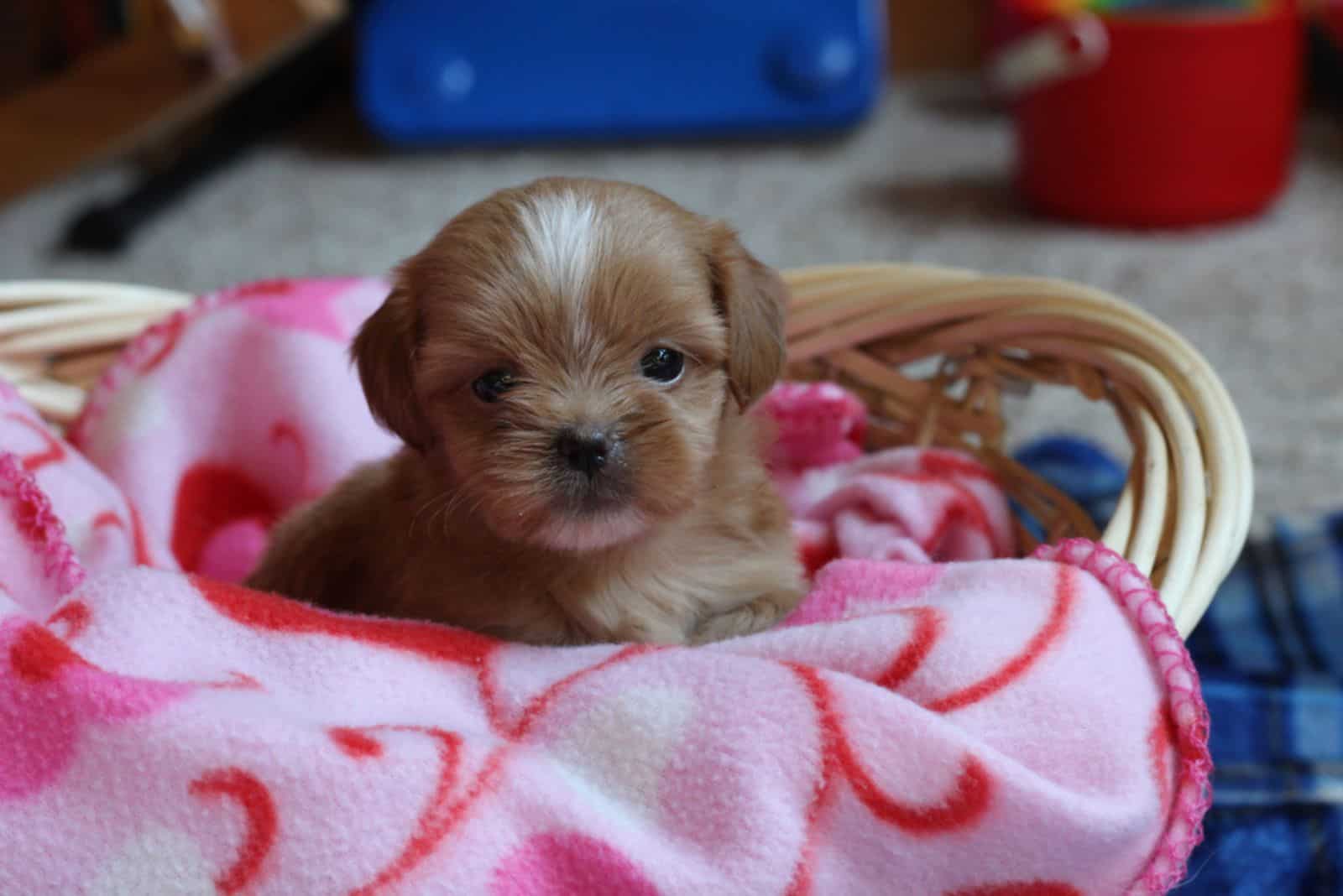
If you’ve ever witnessed the birthing process of any dog (or animal), you know it’s an overwhelming feeling. You feel happy and worried at the same time. Worried if everything will be alright, and happy with each pup coming into this life.
And, newborn Shih Poo puppies are very small! They are usually around 6 ounces, which means they weigh less than a pound at birth!
These tiny newborn cuties are just like other dogs… they are born blind and deaf. They use their cute nose to find their mom and drink the milk.
This is a very important step — drinking the first milk a female dog produces (colostrum). This first milk is high in numerous highly-important elements, from proteins to antibodies – everything a newborn pup needs to start growing and gaining its puppy weight.
It is very important that they drink this colostrum in the first 18 hours because that is the time when their digestive tract can actually absorb the antibodies.
Also, the mother’s milk is so rich in nutrients that the pups double their size by the end of the first week.
Weaning Process
So far, everything explained applies to both Shih Poo growth charts — Teacup and Standard. Both pups are very small at birth, and they should both double their size starting with their second week of life.
And, when they reach their third or fourth week, they slowly enter the weaning process. This is a natural process, which means the puppies are slowly transitioning from a milk-only diet to puppy food (or a solid diet).
We can play an important role during this time. Our duty is to help the puppies transition as easily as possible. We can do this by making puppy mush — dry food (kibble) softened in milk, yogurt, or warm water.
Another important step is to implement free feeding. This means the puppies have puppy mush and solid food available at all times. They can nibble, chew, or just sniff the food whenever they want.
We do this because we want them to get used to a new source of food. Their mom’s milk is soon going to run dry, so they will need energy from another food source.
This phase is the same for all dogs, from tiny Teacup Pomeranians and our Shih Poos to larger dogs like the Great Pyrenees.
Teething Process
Nature has its ways, and it made sure that the teething process (the eruption of the deciduous teeth) and the weaning process start at about the same time.
This is very important because pups that still nurse while having teeth are not a pleasant feeling for the female dog.
Deciduous teeth are also called milky teeth or the first set of teeth. They start erupting when puppies are three to four weeks old. Their teeth are still small, like tiny needles, so making puppy mush is very important.
You will also notice that your puppies have changed their behavior. These changes can be barely noticeable, but sometimes they can do weird things. For example, crying while carrying toys, chewing everything they see, feeling grumpy, etc.
Don’t worry – it will all pass. You can help them by giving them lots of different toys to chew on; thus, relieving the itchiness and irritation that erupting teeth cause.
Cooled carrots are also a good choice. The low temperature can help with irritated gums.
4 To 6 Months
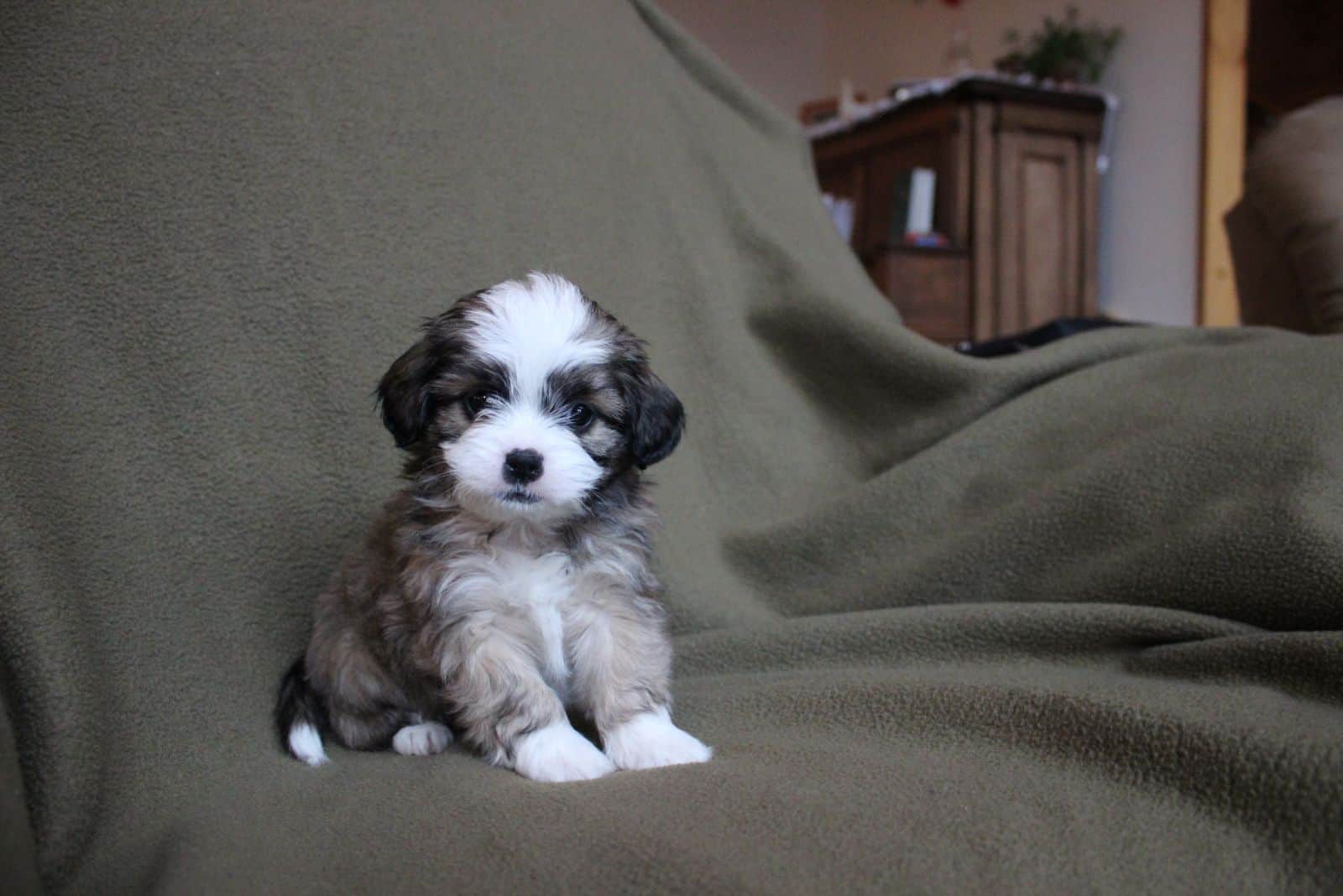
By looking at the Shih Poo growth chart for both the Toy and the Standard version, we can see that they still have the same size as they reach four months of age. They should weigh from three to four pounds.
However, as the fourth month ends, and they continue growing, the Standard Shih Poo puppies gain more weight than the Toy Shih Poos.
As they reach the sixth month, the Standard pups weigh around six pounds, and the Toy pups around five pounds. It’s still not that big of a difference.
But, this slight weight difference shows that the Miniature Poodle genes are kicking in, making the pups grow larger.
Neutering/Spaying
When the Shih Poo pups reach their 6th month of age, it is time to start thinking about spaying or neutering them. Both terms refer to the removal of the reproductive organs — ovaries and uterus in females, and testicles in males.
According to the AAHA (American Animal Hospital Association), dogs whose average adult weight is under 45 pounds (20 kilograms) should be spayed or neutered when they are six months old. This could be earlier for females — five months of age.
Small female dogs can reach sexual maturity and enter their first heat cycle when they are only five months old. That’s why it is important to consult your veterinarian about the signs your dog needs to be neutered or spayed.
However, every dog is unique, and rules don’t have to apply every time. That’s why you should talk to your vet or contact the breeder you got your dogs from. They can tell you about your dog’s parents, and when they reached their sexual maturity.
6 To 8 Months
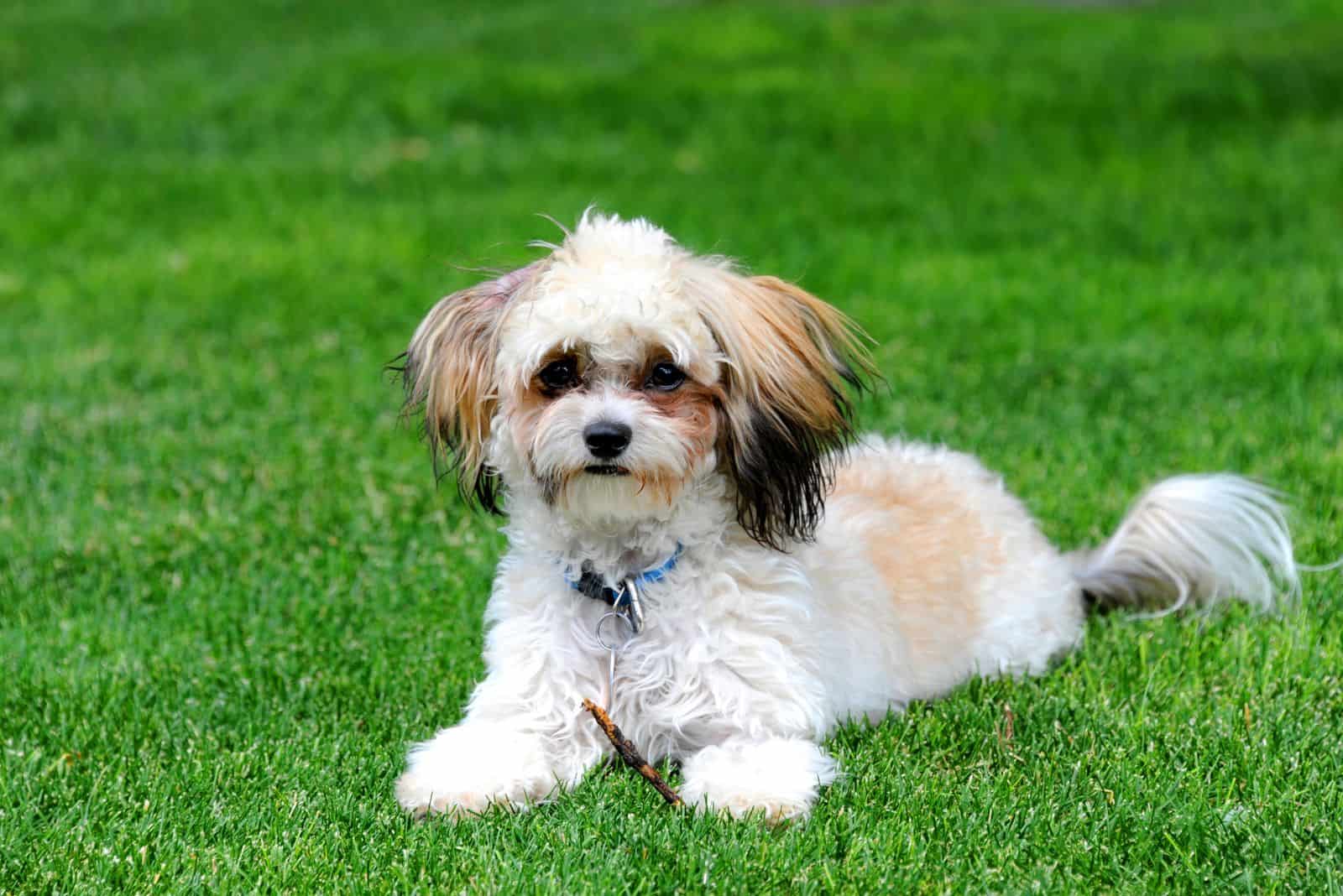
According to the Shih Poo growth chart, the Teacup (or Toy Shih Poo) should weigh from 5 to 5.5 pounds when it is six to eight months old. Standard Shoodles are a bit larger — from 6 to 8.5 pounds.
These next few months are a real adolescent age of a dog. They will have higher activity levels, they will explore more, and they will develop deeper social connections with you, other dogs, and other animals. That is why this phase is very important for training your Shih Poo.
This training is concerned with what is allowed and what is not allowed, like pooping inside or continuing to chew everything they see, even though they don’t have teething problems anymore. This phase is also important for the socialization of your dog.
Socialization
First of all, socialization practically starts from the first day the pups become aware there are other dogs and living beings in general around them.
Socialization is needed to help dogs learn how to behave in various life situations. They need to learn not to act too defensively or aggressively toward other dogs, and people, too… especially small children.
During socialization, our goal is to help puppies get used to different sounds that are normal for a household; for example, a loud TV, music, a vacuum cleaner, etc.
This will all help them grow into happy and confident adult dogs that won’t become aggressively defensive when exposed to something new.
Implementing a puppy schedule is also very important. It helps maintain order and a sense of security for your dog.
8 To 10 Months
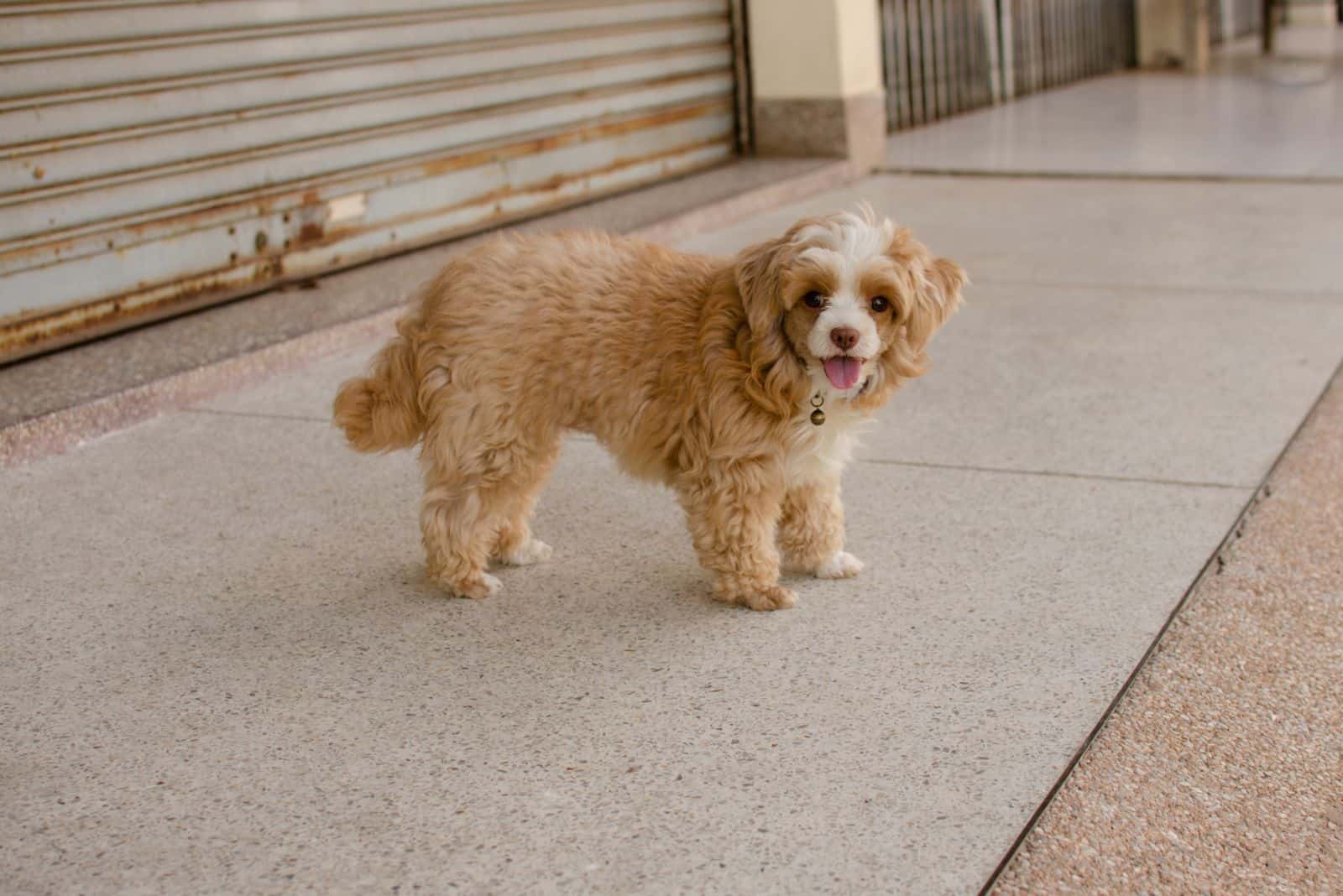
I know what you are thinking — the puppies are almost ten months old, when will they get easier? Yes, it can be overwhelming having a lot of puppies in the house, no matter whether they are big or small.
They can truly make us feel the puppy blues! But, just like teething and chewing, or potty training, it will all pass. They will get easier, and you will have adult Shih Poos that will still look like cute furry babies.
Standard Shih Poos that are 8 to 10 months old should weigh from 7 to 11 pounds. This is the time when they have a growth spurt, and this phase continues into the 11th month… until they reach adult size.
Teacup Shih Poos should weigh from 5 to 7 pounds. The difference is noticeable now, and it will get more noticeable as they reach adulthood.
A Shih Poo puppy that is ten months old will look very much like an adult Shih Poo, but they are still puppies. This means they still need puppy food and not adult dog food.
The puppy food has all the necessary nutrients important for the proper development of the puppies. They might not grow a lot taller, but they are still gaining weight, and they need high-quality food.
This means they need food that is rich in proteins and low in carbohydrates. They should also have food that has a lot of minerals and vitamins.
10 To 12 Months
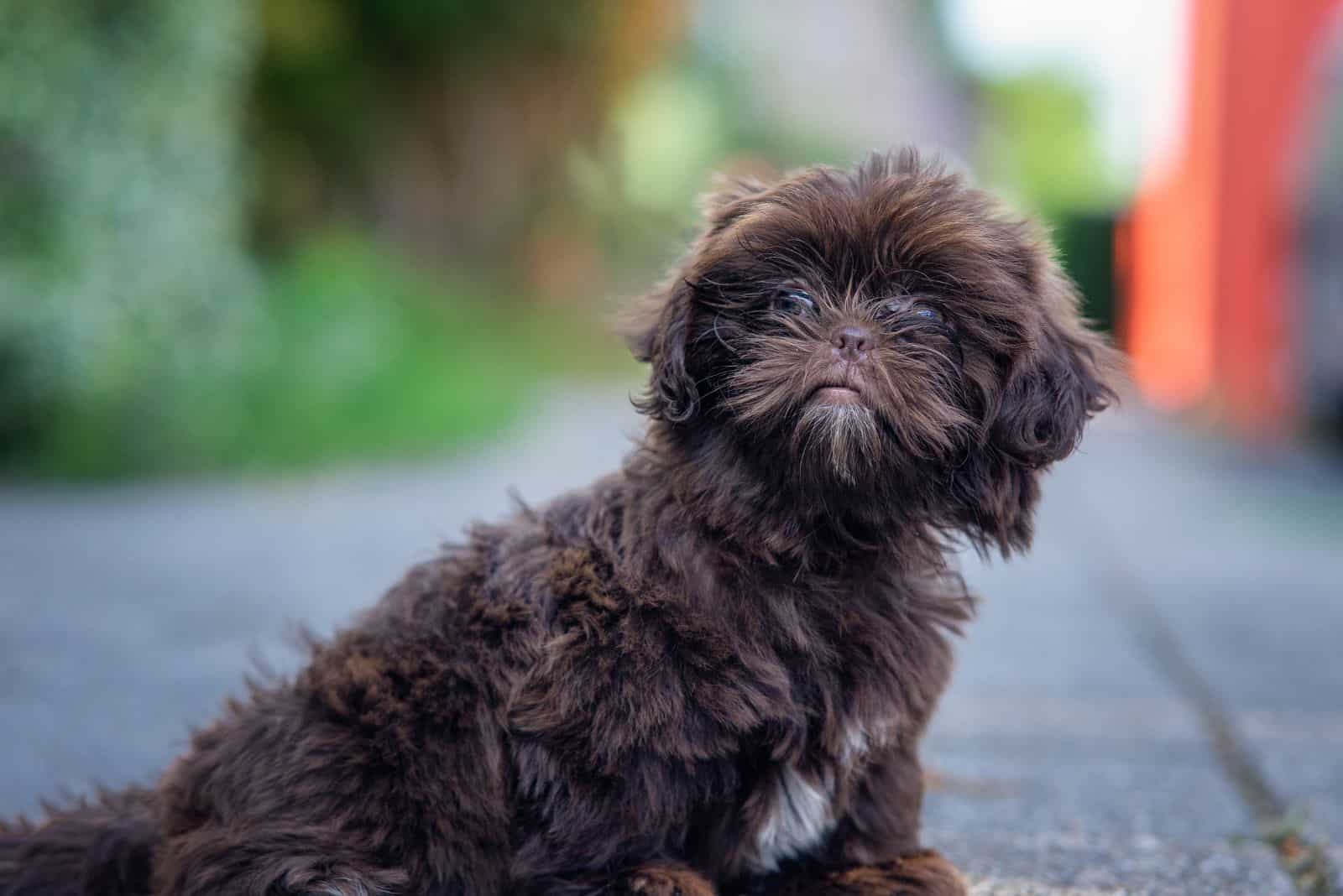
From ten to twelve months of age, both Standard and Teacup puppies can rapidly gain weight. The Standard Shih Poos can weigh anywhere from 8.5 to 16 pounds, and the Teacups from 5.5 to 10 pounds.
As they reach the 12th month, both size versions of the Shih Poo dog are slowly entering their adult phase. They will soon stop growing completely. This final growing stage is perfect for little adjustments in their diet — if needed.
Always consult your veterinarian before any change in your dog’s diet, especially if you are mixing vegetables and fruits in your dog’s diet on your own. You should always check if they are safe for dogs to eat.
You can always add some green beans or brussels sprouts to your dog’s diet for some fresh vitamins. However, avoid onions, mushrooms, and asparagus.
See next: How Much Raw Food To Feed A Puppy
Adult Years
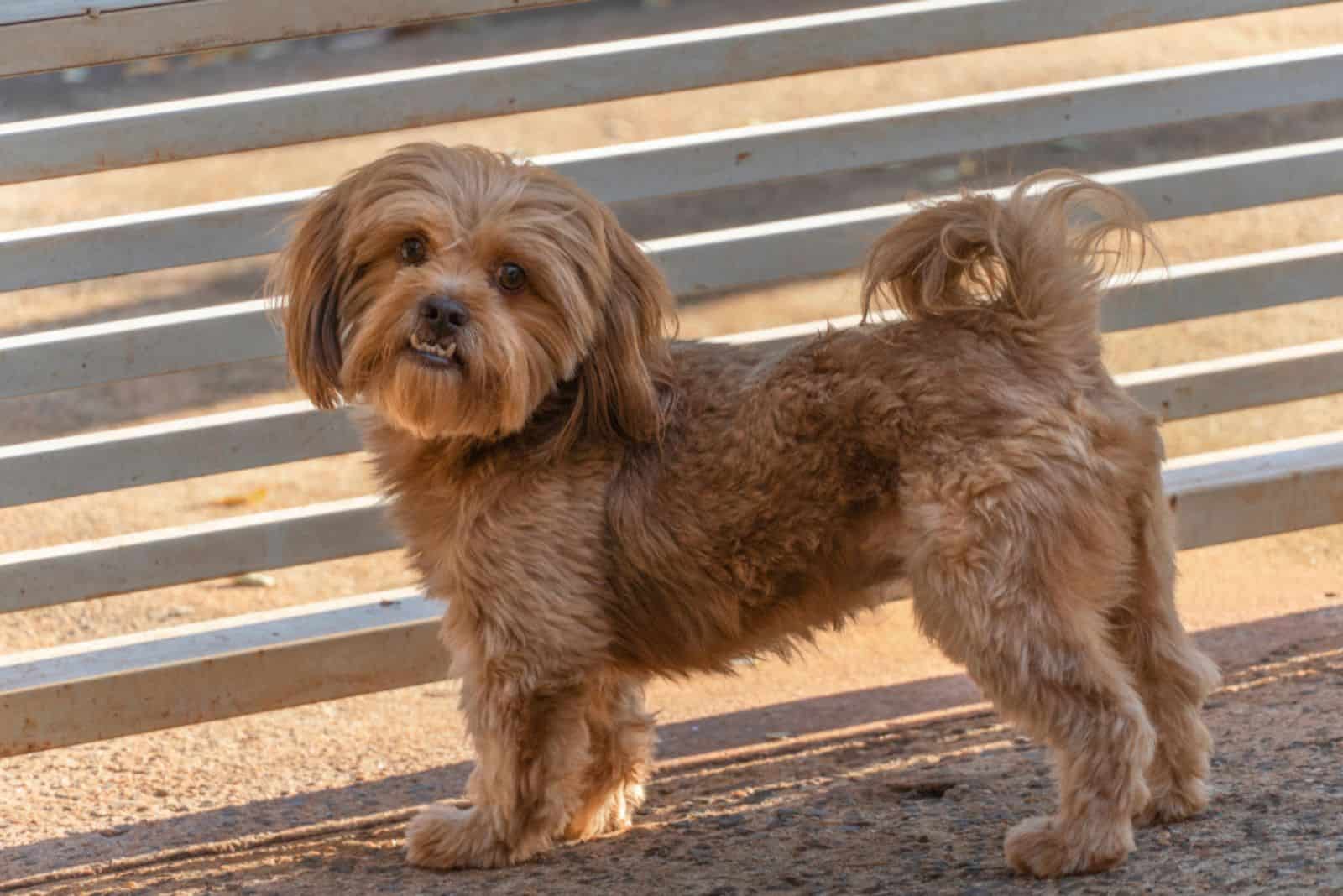
When dogs turn one year old, they officially become adults. They cannot grow anymore, meaning they cannot develop — the growing phase has ended.
However, they can gain weight. All dogs can get overweight if we are not careful how we feed them and what we feed them.
The Standard adult Shih Poo dog will weigh from 11 to 16 pounds, and the Teacup from 7 to 10 pounds. The height of the Standard Shih Poos is from 12 to 16 inches, and the height of the Teacups is from 7 to 11 inches.
As you can see, Shih Poos are small dogs. But, they still need their daily walks and playtime. They are not the most active Doodle out there; however, they are moderately active.
This means you don’t have to spend hours running around in the park. They will be fine with 30 minutes of daily activities. Keeping your dog active and mentally stimulated is very important for your dog’s health.
Shih Poos are generally healthy dog breeds, but they can have some health problems. High-quality food, daily exercise, and lots of love can help prevent a lot of health issues – not to mention it is the perfect opportunity to further bond with your doggo.
What Can Influence The Shih Poo Growth Chart?
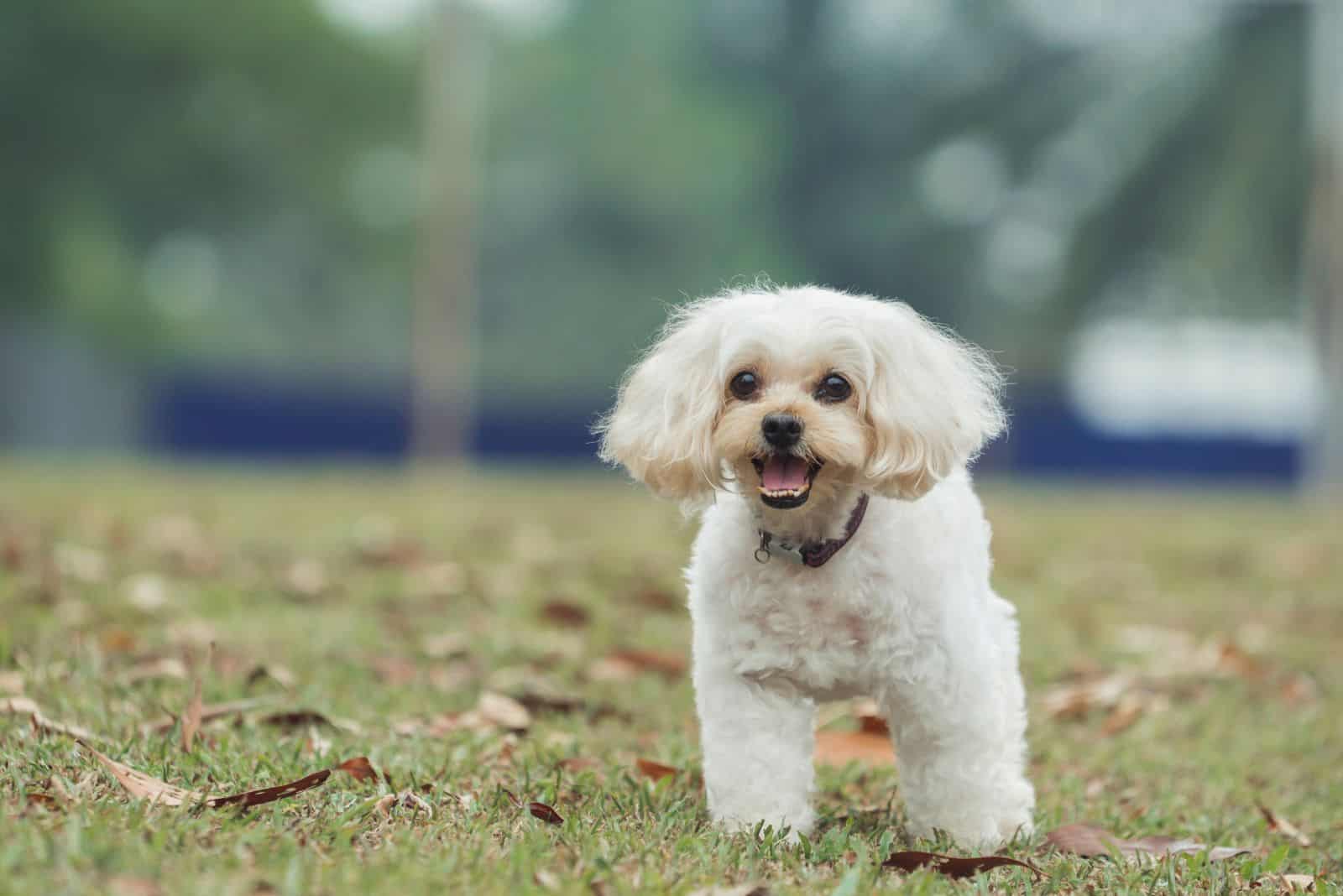
Deciding how big a mixed dog gets can be quite a problem when we have a mixed dog that comes from two very different dog breeds.
But, we don’t have that problem with Shih Poos. They have two purebred parents that are similar in size, which makes it easier to predict their future size.
We can predict the size and talk about it because of the genes. Genes are one of the biggest internal factors that can influence the Shih Poo’s growth. If one of the Shih Poo’s dog parents is taller than 20 inches, there is a big chance they will be close to 20 inches tall as well.
The same thing applies if they are smaller than 15 inches. Genes dictate physical and temperamental traits.
But, there are other factors that can influence the Shih Poo growth chart.
These factors are called external factors, and they can be:
- Viral diseases
- Bacterial diseases
- Parasite infestations
- Endocrine process (hormonal influence)
- Diet (lack of nutrients)
- Injuries (preventing ingestion)
- Neoplastic changes – tumors (preventing digestion or absorption)
As you can see, there are a lot of factors that can influence the size of your Shih Poo puppy — both Standard and Teacup. That’s why you don’t have to worry if your puppy doesn’t fit these numbers.
As long as your puppy is healthy, and you get the green light from the vet telling you that everything is alright — don’t worry.
Read Next: My Puppy Is Always Hungry
The Conclusion
Whether you are planning on bringing home a Teacup (Toy) Shih Poo or a Standard Shih Poo puppy, you can use this Shih Poo growth chart to check if your dog is developing according to the standards.
You don’t have to strictly follow these numbers — they are average numbers after all. However, they can give you good insight into what is normal at what age.
We also mentioned all the important developmental phases in a dog’s life, focusing on puppyhood. That is the time when their body and brain keep getting bigger. Of course, the brain doesn’t get literally bigger — but they do learn a lot!
It is a well-known fact that small children soak up everything like tiny sponges. Well, baby dogs do the same. Puppies learn a lot faster than adult dogs. And, they are much easier to control and teach obedience lessons to.
All in all, the important thing is that you have a healthy and happy Shih Poo pup. It doesn’t matter if it’s a bit smaller or larger than the average. If you and your vet think it is healthy — that’s what matters.
